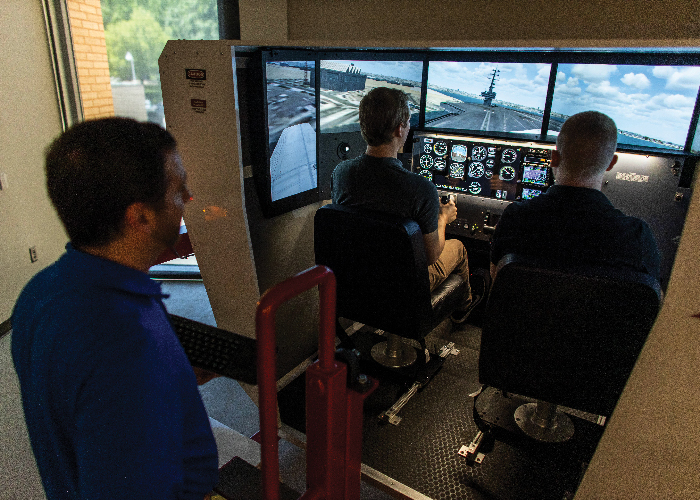As excitement surrounding the opening of the Robert W. Plaster Free Enterprise and Research Center has ramped up, so has excitement surrounding the expanded education and research opportunities it provides.
Among the building’s most eye-catching features is the three-story Motion Capture Lab and Flight Simulation Lab, reflecting the School of Computing and Engineering’s expansion into aerospace engineering.
Through his work with unmanned aircraft technology, Associate Professor Travis Fields noticed that many high-level contracts, grants and research initiatives were leaning toward airspace. He also noticed that students required more hands-on experiences in rigorous, interdisciplinary fields like mechatronics, an intersection of electronic, electrical and mechanical engineering systems.
Together, Fields and Assistant Professor Mujahid Abdulrahim are partnering to charter the Master of Aerospace Engineering program at UMKC.
“The courses Travis pioneered are things we would love our students to know, like system modification and guidance laws for aircraft — classes that address the research needs and lay the foundation for aerospace curriculum,” says Abdulrahim, who’s been flight-testing aircraft for 21 years. “Anytime students are tasked with designing something new or have a specific desire to go into aerospace, we’re teaching the philosophy behind it.”

Whether students need to understand how to develop new things or have a specific desire to go into aerospace engineering, Fields and Abdulrahim agree that aircraft can be a great jumping-off point for other areas of engineering. And while both professors admit their obsession is with with aircraft, students will also learn to integrate cars for those who want to go into automotive testing and performance assessment.
“There is a responsibility on you as an engineer to do good work. It’s not just optimizing the most efficient system possible, it’s also about the holistic design approach that aerospace engineering promotes,” says Abdulrahim.
That’s where the new Flight Simulation Lab comes in. The lab allows students to do complex and relevant tests in safe and accessible ways, teaching them all the things Abdulrahim says he wishes someone would’ve told him when he started out. The new space will help provide the workforce development training students really need.
